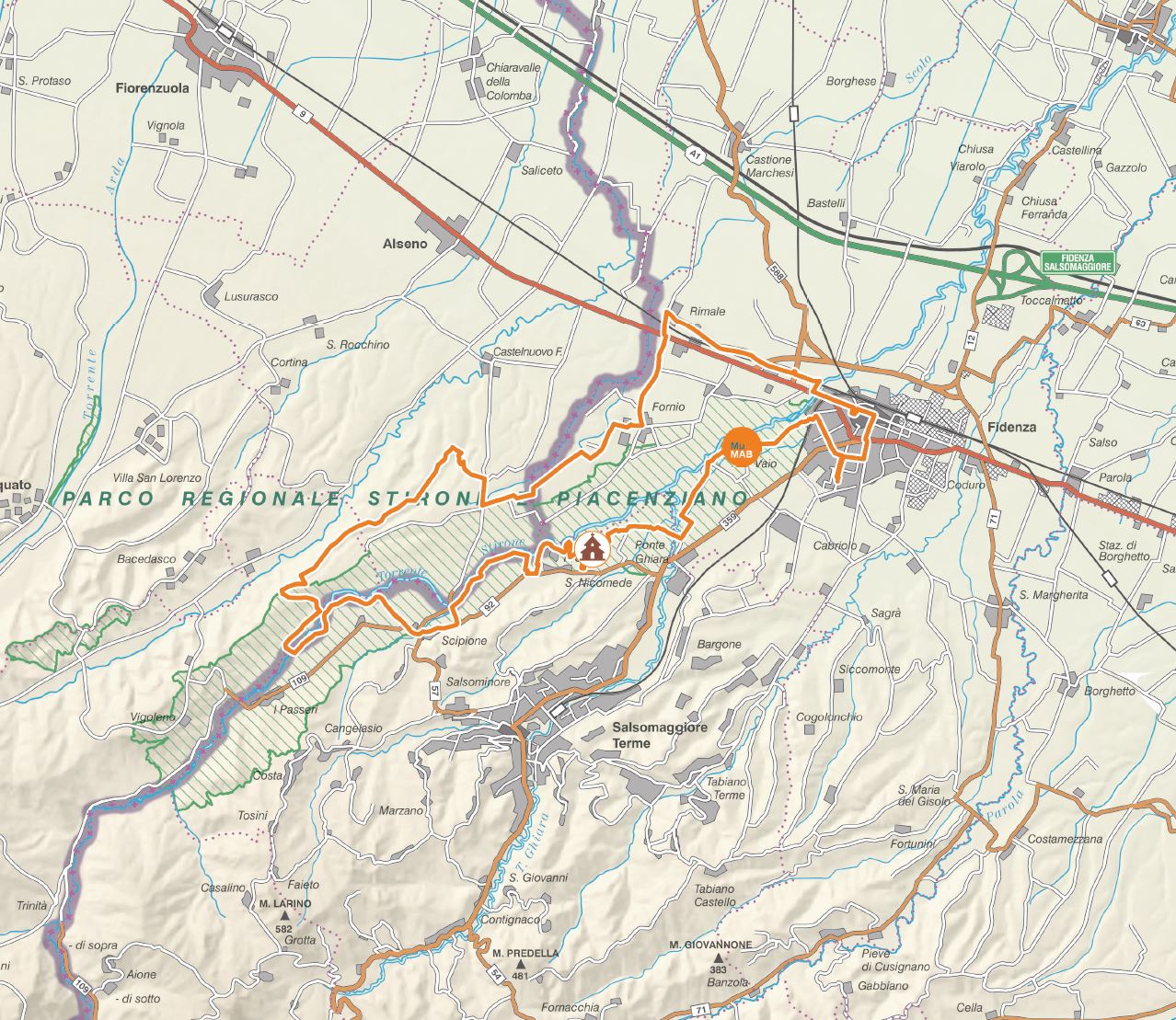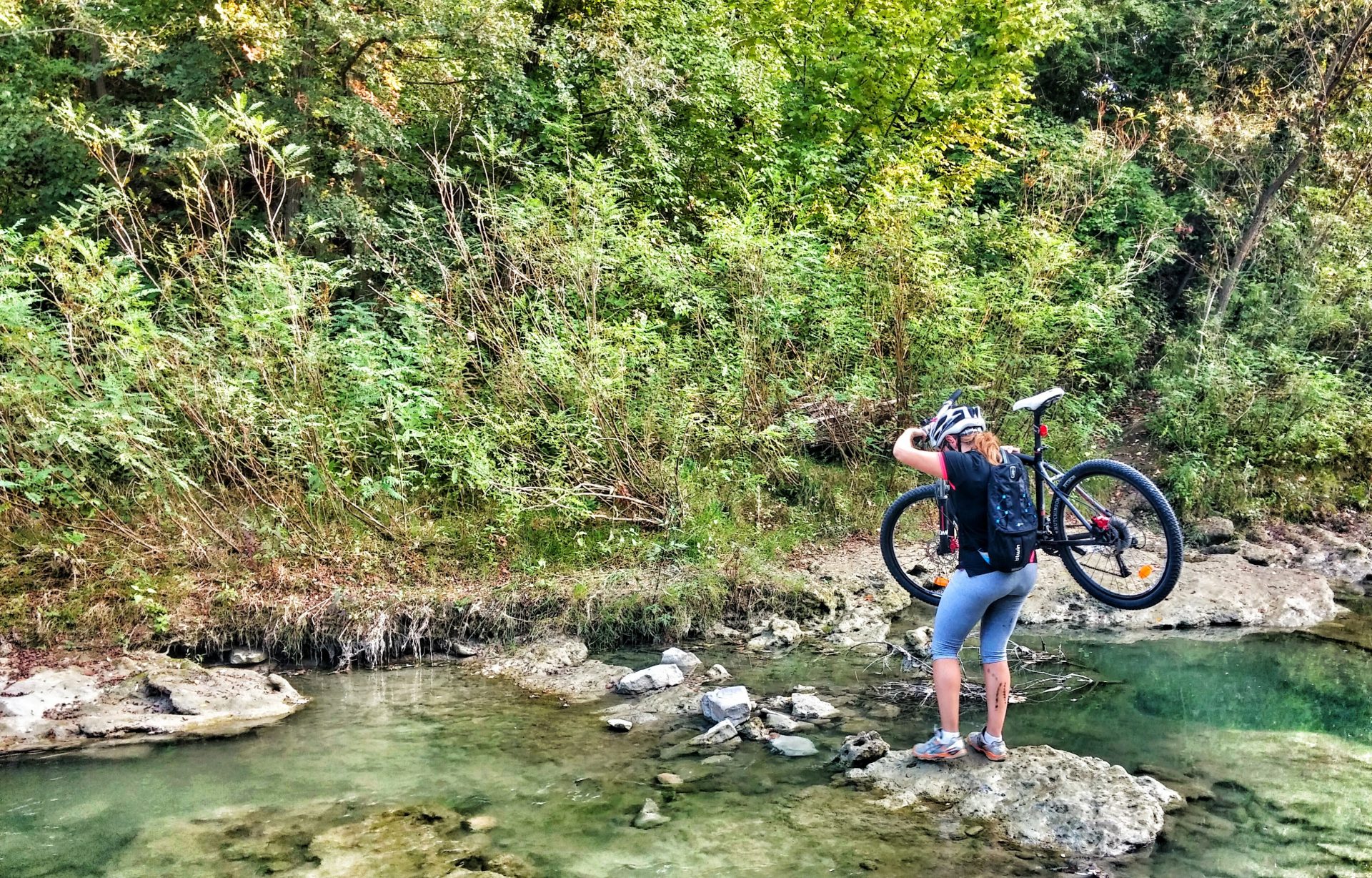
A journey discovered 152 thousend years ago
DID YOU KNOW THAT HUMAN PRESENCE IN THE REGIONAL STIRONE RIVER PARK AREA AND ITS BORDERING AREAS DATES BACK TO THE LOWER PALEOLITHIC?
IN FACT, A NUMBER OF ARTEFACTS DATING BACK TO 150,000 BC HAVE BEEN UNEARTHED HERE, CLOSE TO THE OLD RIVERBEDS, FROM WHICH ANCIENT PEOPLES OBTAINED THE PEBBLES THEY NEEDED TO MAKE TOOLS AND UTENSILS. THESE PEOPLES LIVED MAINLY OFF HUNTING, FISHING AND WILD BERRIES.
This route takes you into the Stirone and Piacenziano Regional Park, which is part of the Parks of the Duchy, a vast area comprising five parks and four regional nature reserves in Western Emilia, in the provinces of Parma and Piacenza. The route is forty kilometres long, in which nature takes centre stage, from the farmed fields of the plains to the Stirone river’s canyons and will invite you to tackle its single-track footpaths along the riverbank woods.
This verdant nature will keep you company and you may even spot a few roe deer along the way or see the footprints left by a wolf on muddy terrain. Depending on the season, you are likely to catch sight of a grey heron motionless in the middle of a field or a brightly coloured bee-eater perched on one of the canyon’s walls. A couple of detours off this nature route are also recommended.

The first is to San Nicomede’s Parish Church, an age-old royal chapel of which there is historic evidence dating as far back as the Middle Ages. Legend has it that the spring called Fontana Broccola had healing powers, whose waters were drunk by those hoping to be cured of their headaches and that people came here with a brick on their heads. Due to its proximity to the Via Francigena, many pilgrims stop by this parish church. Our second detour is to Millepioppi Farm, where we find the MuMAB – Ancient Sea and Biodiversity Museum which houses the most important geopaleontological collection related to the Po basin. Its exhibits include the fossils of three 10-million-year-old whales. The collection illustrates the evolutionary processes that shaped the Po plains in a time frame ranging from the Middle Miocene to the Pleistocene, taking visitors back to far-off times in which the whole of northern Italy was covered by an ancient sea. A natural history section also explains about the park’s modern environment. The cycle track that links us to Fidenza town centre then takes us gradually back into the urban environment.
FEATURES
STARTING POINT/FINISHING POINT Fidenza train station
LENGTH 37 km
ALTITUDE GAIN/LOSS161 metres
ALTITUDE PROFILE min. 75 – max. 146
ROAD SURFACE TYPE off road
DIFFICULTY LEVEL easy
POINTS OF INTEREST
- San Nicomede’s Parish Church
- MuMAB (Ancient Sea and Biodiversity Museum) Millepioppi Farm
DOWNLOAD
You must have an app that opens kml files on your device, in order to view the itinerary on your phone, like for example Google Earth. The GPX files must be installed on the gps using the app given by the provider.

